Visiting Kibbutz: You really don't know what evil is.
Warning: Graphic and disturbing content
It's a bright, sunny day. The fragrance of blooms catches the nose amidst the dust and the heat. A light breeze rustles the leaves of the many trees dotting the compound.
Other than the murmur of distant traffic and the chatter of birds, the place is silent. Deserted.
We stood at a central courtyard, next to the abandoned school, under the shelter of veteran trees. Where once the scream, laughter and songs of children filled the air, instead a strange doleful ellipsis of sound looms larger than its vacuum. As if waiting for something to return. Life? Or death.
This is Kibbutz Kfar Aza. One of a handful of residential collectives brutally attacked on October 7th, 2023.
The idea of kibbutzim is a rather foreign, socialist project to many Western minds, so used to atomised existences where neighbours exchange curious glances rather than their entire lives.
The word itself means gathering in Hebrew, the concept based upon an old Zionist ideal of egalitarian, collective living, where residents share income, resources and responsibilities from childcare, to education, to health and defense, even meals. Whereas once, kibbutzim were largely agricultural settlements, today they have diversified. Residents no longer entirely pool their salaries as they pursue different professions, but they continue to live generation after generation together, their children educated with one another, the responsibilities for protecting the community shared out among all those who call it home.
Kibbutz Kfar Aza has a library and a school, a kindergarten, a health centre, and, of course, a weapons store. It is split up into generational areas. Larger homes for families raising their offspring as one, and small, self contained one bedroom properties for those who have just fled the nest and want to try independent living, but together. The young adults enjoying barbecues and booze, inside the community but free from their parents.
The idea is really rather beautiful, and from all accounts, was a great comfort and succour to its inhabitants.
At 0640am, Saturday 7th October, on the Sabbath and the Jewish holiday of Simchat Torah, where families come together, deliberately leaving behind phones and modern technology to focus on time together, a barrage of rockets ripped through the sky in the early hours.
As terrifying as this would be to most people, the sound of ballistic projectiles is all too common for Israelis in the Gaza Envelope. Every house is equipped with a safe room, a fortified bunker to protect against aerial blasts.
As the men in the Kibbutz responsible for protecting the community went to arm themselves from the weapons store, another noise began to tear through the fabric of the dawn murmurings. The distinct snap of bullets.
This was no ordinary attack from the bloodthirsty terrorists in the Gaza strip, a mere 2km away, visible from the Kibbutz.
As families secreted themselves in their bunkers, frantic messages ricocheted between mobile phones. Panicked ring tones echoed in the distance unanswered. It became clear that the enemy was not simply slinging missiles at their properties, it was inside the gates.
Kibbutz Kfar Aza counted among its 1000 residents 14 defenders. Soon, a wave of 150 terrorists would swamp the compound to begin a deadly, demonic massacre.
The first wave that penetrated the borders were the Hamas elite forces, trained Nukhba soldiers ready to kill everyone they encountered apart from a handful chosen at random who would then become hostages.
Buildings were to be riddled with shot, grenades thrown into spaces where parents wrapped themselves around crying children, and the homes finally torched. Bodies dismembered, dragged from burning homes, repeatedly shot and chopped to guarantee a gruesome death. The whole lot filmed and sent back to sadistic commanders and salivating relatives back across the fortified border, even livestreamed to show the world the brutality of the mission.
The second wave were amateur fighters, armed with guns and mobile phones, clambering through the torn wire fences that had once kept the enemy from entering. Along roads where once Israelis travelled to go to the beach, to work, to meet friends, and the citizens of Gaza had come inland to work, Toyota pick-ups and motorcycles now kicked up clouds of dust and more joined the massacre. Gazans given proper pay and jobs in Israel, knowing every neighbour by name, a cheerful hello, a friendly exchange.
Taking notes and drawing up blueprints to hand back to Hamas to prepare for The Killing.
Eventually the Gazan people themselves came, titillated by the livestreams, drooling for a slice of the barbarism. To loot the burnt out properties, take part in the bloodfest and shout and film the carnage with unbridled glee.
Walking around the decimated commune, homes left violated by the unthinkable violence, I spot graffiti on the walls.
The spray painted marks were not made by the hands of the terrorists, but as part of the rescue mission that followed by the IDF.
Bodies had been boobytrapped by the militants, with mines and grenades buried inside the ripped open corpses. Anyone coming to recover a victim for a burial faced being blown up themselves.
On every facade, the number of the house. A red circle marking a victim in the property, a letter V and number denoting how many. Triangles marked that the building had been cleared of explosive. A black square that the site had been excavated by professional archaeologists to identify the remains of the massacred victims, so decimated were many by this barbarism. Deliberately so. To desecrate the bodies to leave a sinister message to the survivors.
Walking around the once thriving community, all that is left are rubblized remains of lives, riddled with incalculable numbers of bullets, torn down by ferocious fires, twisted skeletons of furniture showing that once upon a time, people lived here.
Over 6000 Gazans breached the border in 119 locations, attacking 21 communities and slaughtering 1195 innocent Israeli citizens.
In the Kibbutz, the images remain of the people who were brutally murdered.
My guide theough the harrowing wasteland, Rona Epstein, a young female IDF soldier (almost every young person at one point has served) was a former resident. Dressed in army fatigues, eloquent, strong, yet with a dutiful supererogationism few humans possess, or exhibit. She was away when the attack took place.
As we walked past the carcasses of homes she pointed to the tree where one uncle was shot. Another uncle, coming to his aid, also mowed down in a blizzard of bullets. Her grandmother, slain in cold blood.
A tiny, humble frame of a small house, burnt and battered, in the young person's neighbourhood, where her cousin Nitzan had valiantly tried to stay in his safe room, clinging onto the handle and pulling the door inwards as the terrorists fought to gain access, repeatedly shooting up the door.
The safe rooms are not designed to lock from the inside. They were designed to protect from rocket fire from above, not a ground invasion, with doors purposefully not locking in case first responders and rescuers needed to get inside. For eight hours he struggled, having been shot in the leg and managing to make a tourniquet with one hand while using the other to hold the door firm as bullets continued to rain down.
His body was found dragged outside, metres from his front door.
Another modest little home, kitchen still intact, spice jars and trinkets on shelves leading onto a small living room where fragments of sofa remain thrust against bullet ridden walls.
The bedroom at the back, doubling up as a safe room. It was here that Netta Epstein saved his fiance Irene's life.
Only just out of military service, young Netta, a keen goalkeeper for the local team, knew how to deflect grenades. As they were tossed into the small room where his fiancée hid under their bed, he threw one back outside. A second, he also managed to deflect.
The pair had been due to marry the following April. Irene had already bought the wedding dress.
On Saturday, October 7, the younger residents of the kibbutz were planning a group breakfast before an annual kite festival.
The plan was to fly the home made kites with messages of peace and love into Gaza. But that morning a red alert had blazed on the alerts system through the commune as missiles screeched through the sky. Netta and Irene sent a photograph to relatives to show they were safe. They held eachother in their arms in the missile-proof cocoon of their first home.
By 8am, word was spreading via WhatsApp groups that there had been an incursion.
As havoc and hell rained down upon their homes, Netta saw a third grenade thrown inside their shelter. This one, however, had already been activated -- for a while.
It would be too late for Netta to prevent the inevitable.
So instead, he did what he had been trained by the army to do.
He threw himself over the grenade to absorb the blast.
He saved his Irene's life.
The Hamas fighters then burst inside - spraying his body with bullets to finish him off, before setting the room ablaze.
Somehow, Irene, frantically messaging her family in shock, panic, was guided by her father in law as to how to survive, urging her to keep fighting - for his son’s sake.
She bravely managed to pull her pyjamas over her face to block the smoke and fumes as she heard the attackers withdraw. She crept out to put out the fire, before returning to hide under her and Netta's bed
When she heard the attackers return, she shielded herself behind his lifeless, bloodied body.
Netta. Her true love. Saved her life.
Twice.
8 hours later, the sound of Hebrew, as the voices of IDF soldiers sounded where she lay. Irene was rescued while a fierce battle still raged around the kibbutz her and Netta had called their home.
“That was my brother” Rona said, her face barely flickering. A strong, beautiful human soul with no tears left to cry. The emotional wasteland of desolation few of us will ever have to endure.
There were over a thousand victims that day.
Day after day Rona brings people to her childhood home. In order that they may learn from that most wicked of days that robbed her of so many family members and friends. So that her brother's life was not in vain. As the collective West turns its back on Israel, letting the Islamist tail wag their broken societies, the cry from Tel Aviv is clear. We are with you.
Even if we have abandoned them.
The tragic, heartbreaking story of Netta is by no means a one off. I have seen the unedited footage of those blood-curdling, demonic, possessed attacks.
I have seen footage of a father also throwing himself atop a grenade to save his little boys. His babies.
Moments after the explosion, captured on the family CCTV, the two bandy legged, young brothers, still in their pyjamas, emerge shocked and terrified, running back to the house from the bomb shelter their brave father had led them to in the early hours, using his own body as a sandbag to protect his children as grenades were thrown inside.
The little ones try to comfort eachother, as the youngest holds his big baby eyes with floppy childish hands. He is blinded by the blast.
Why am I alive, why am I alive, sobs the oldest, a little lean limbed child, uttering such adult cries of pain, gulping in anguish and fright. Wanting to break apart, but trying to be the big brother. I would guess the children were around 8 and 11.
The two cradle one another. They sob and rock, crying out desperately for Mummy
I want my Mummy.
I want my Mummy.
I want Mummy.
As the Hamas terrorist who has brutally obliterated their father raids the family fridge.
[the two boys somehow survived. And are with their Mummy today. Praise God.]
Much of what I saw in the unedited footage of October 7th, from the Kibbutzim, from the site of the Nova Festival, the attacks on the IDF bases staffed largely by teenage girls, cannot be relayed.
Not even in writing.
From decapitations with basic blades at the instruction of commanders, ordering the terrorists to bring back severed heads for the people in Gaza to play with in the streets. The people. Not other militants. The citizens.
Elated phone calls made by the barbaric murderers to their parents back in Gaza, boasting how many lives they have taken as their mother and father praised them with joy and pride.The footage of the hostages, girls bloodied and violated, legs splayed, haemorraghing from internal injuries, as the young, male, throng of residents, stimulated by the savagery, smacked, spat, guffawed and grabbed at the near lifeless chattle.
The sheer bestiality and evil perpetrated that day led some to speculate whether the militants had been drugged in order to desensitise them enough to commit such acts of unthinkable violence and gore. Not a single killed terrorist showed any signs of drug use. Instead, many carried bottles of perfume, to douse themselves before being attacked in order that they may prepare themselves for the 72 promised hairless virgin slaves they would be entitled to in the after life. Death being nothing but a rite of passage, the ultimate sacrifice of Jihad which would take them to paradise.
Kibbutz Kfar Aza will be rebuilt. What is left of the residents are determined to move back in and reclaim the sanctuary where entire families and houses of neighbours were slaughtered.
Even though the one, dark ominous neighbour remains, just on the other side of a fence, visible in the shimmering dusty heat, vengeance never sated.



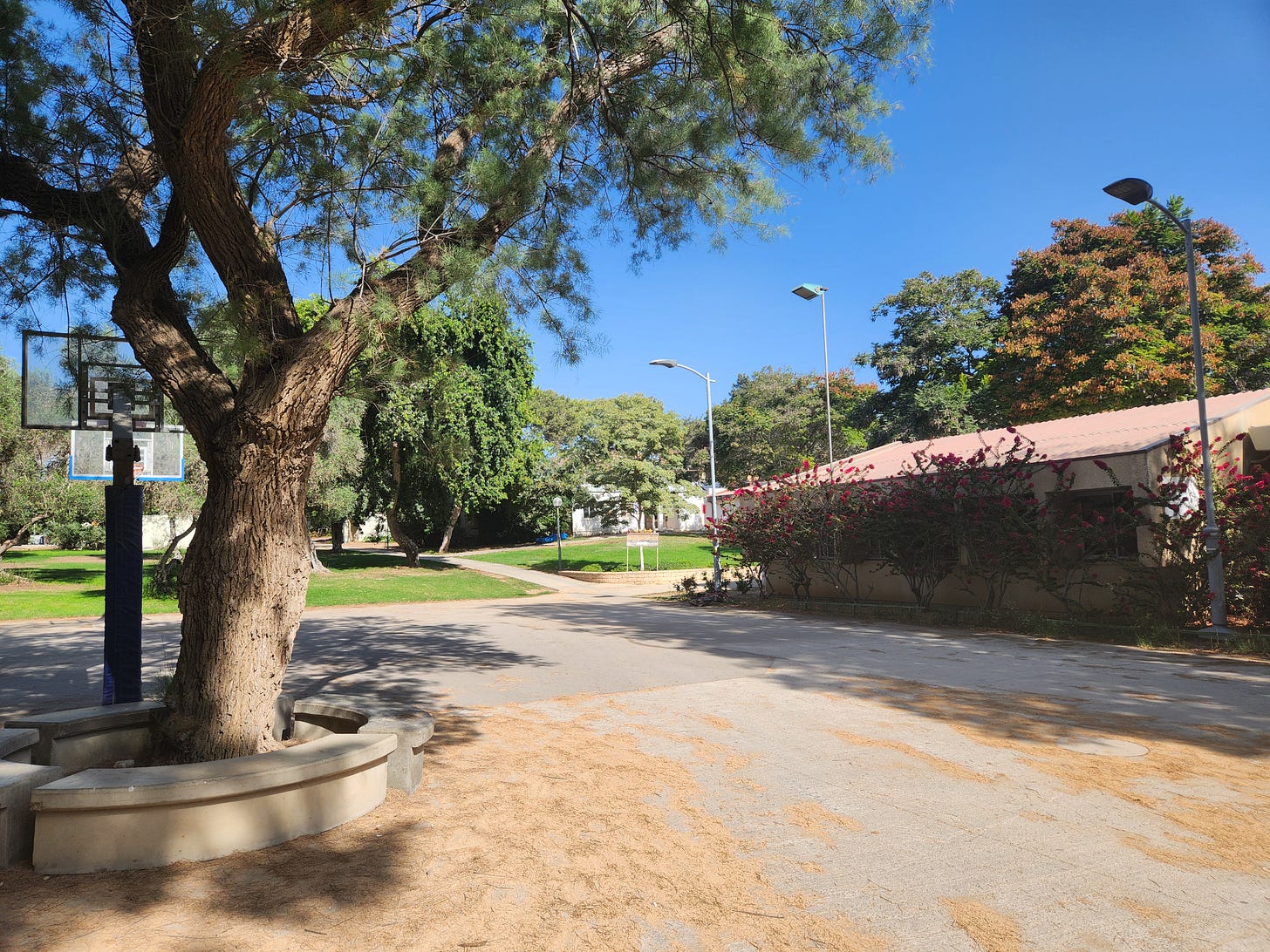
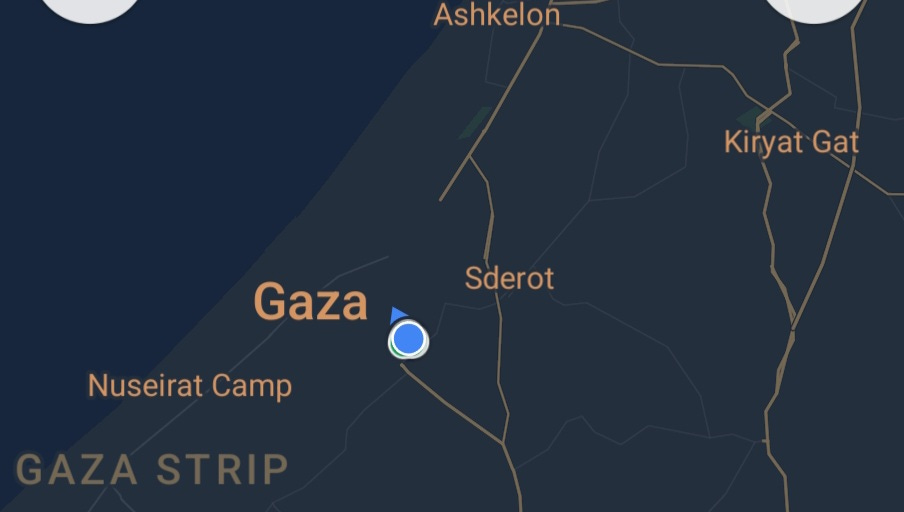

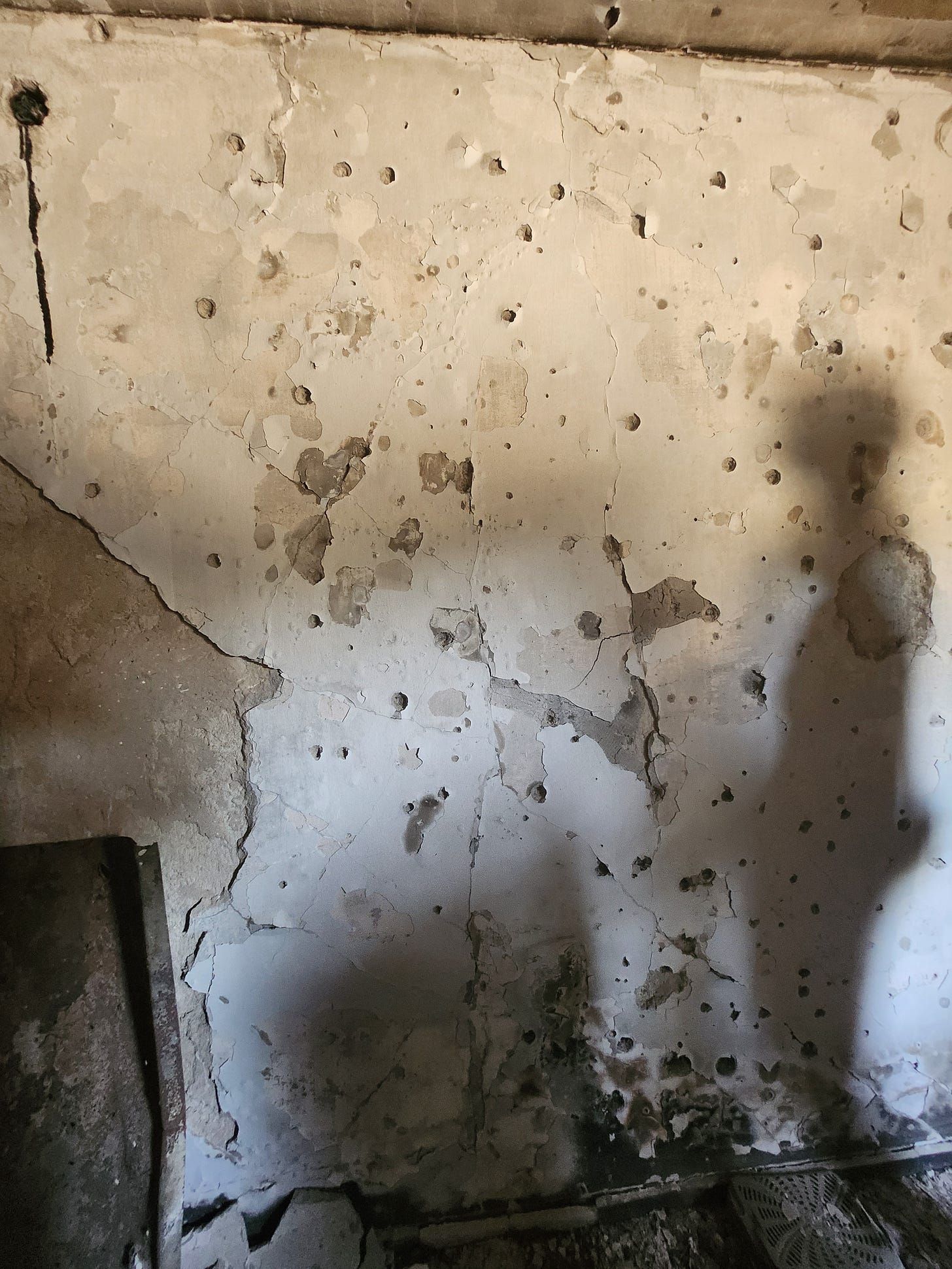
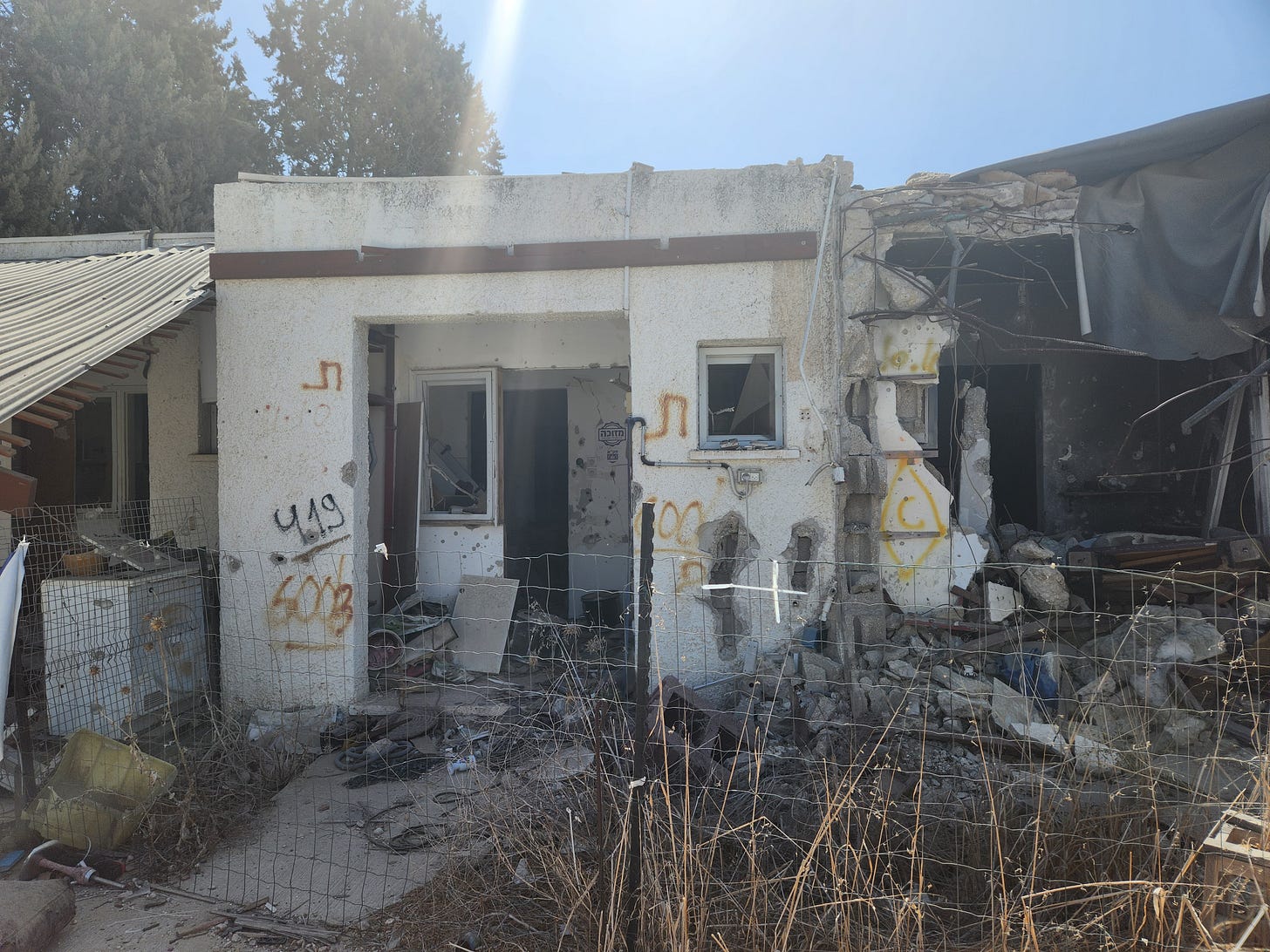
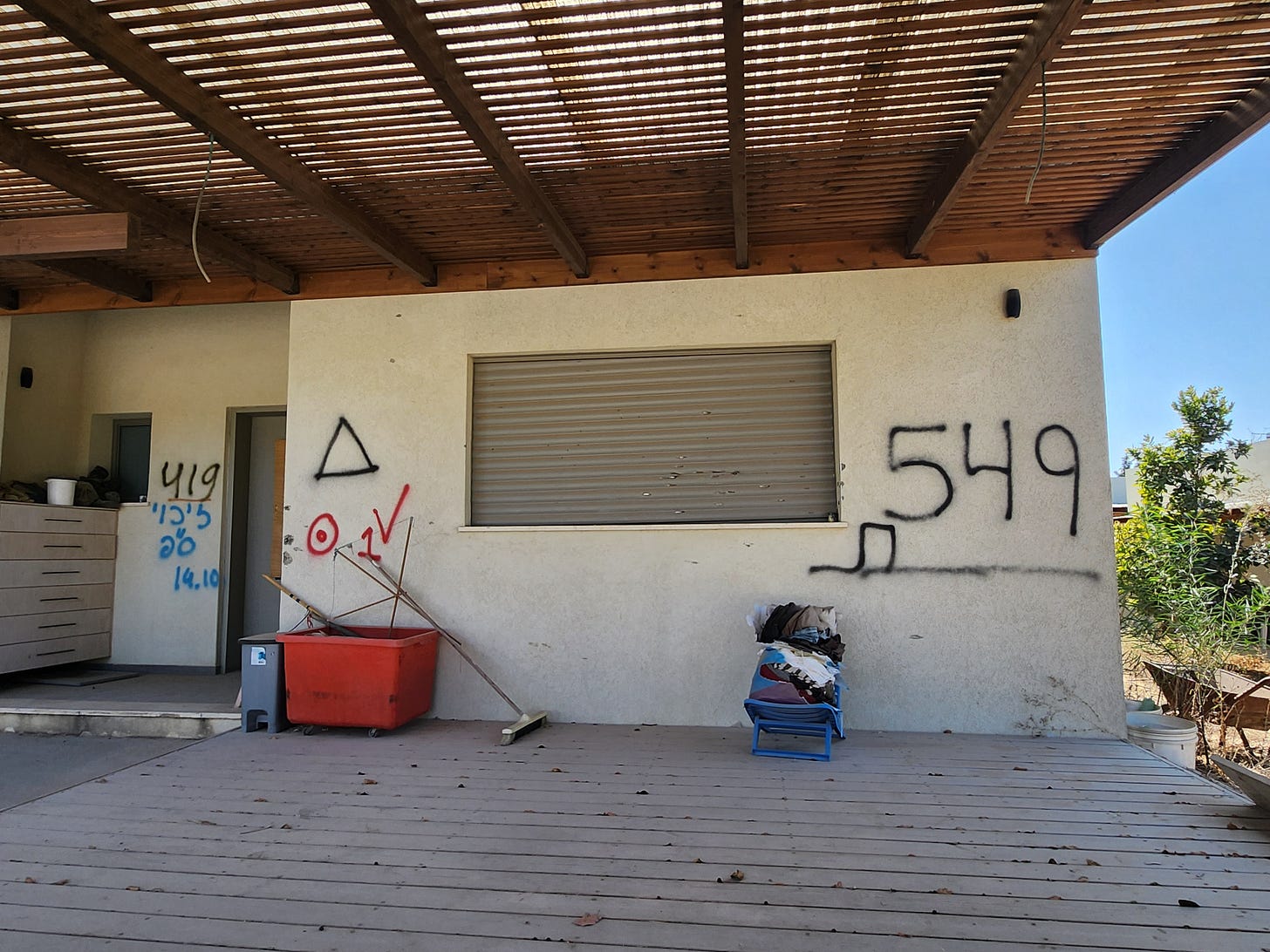
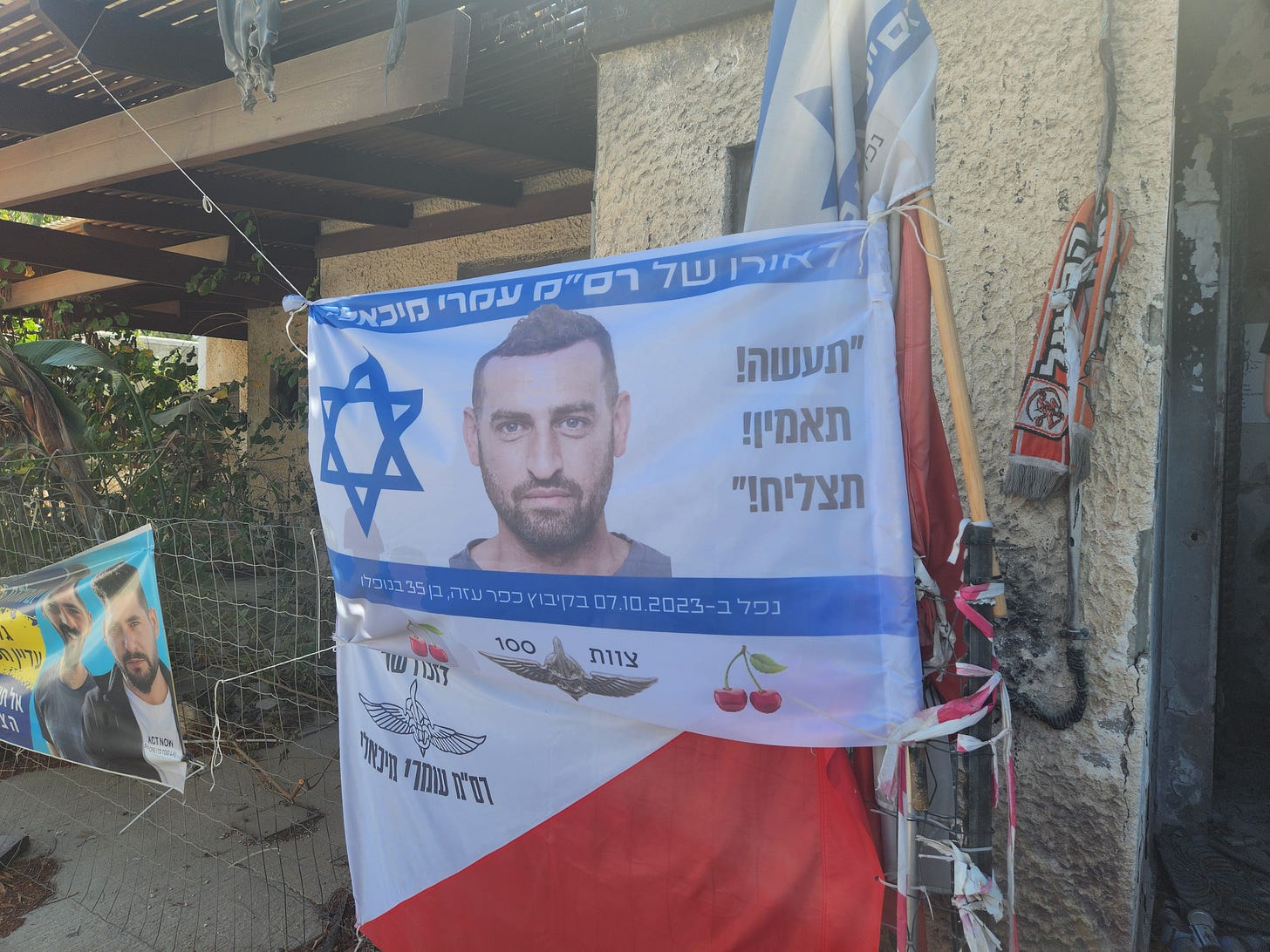
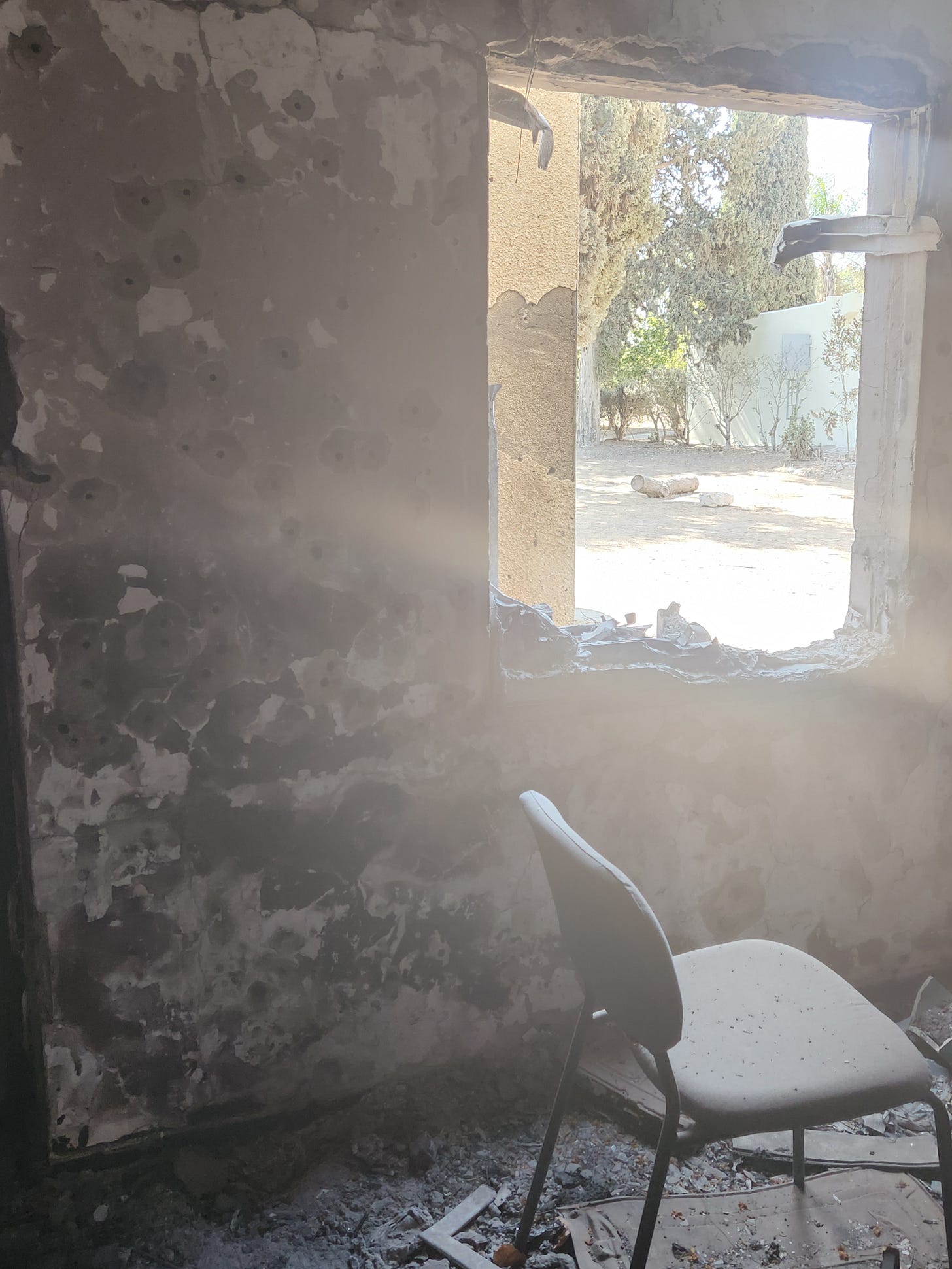
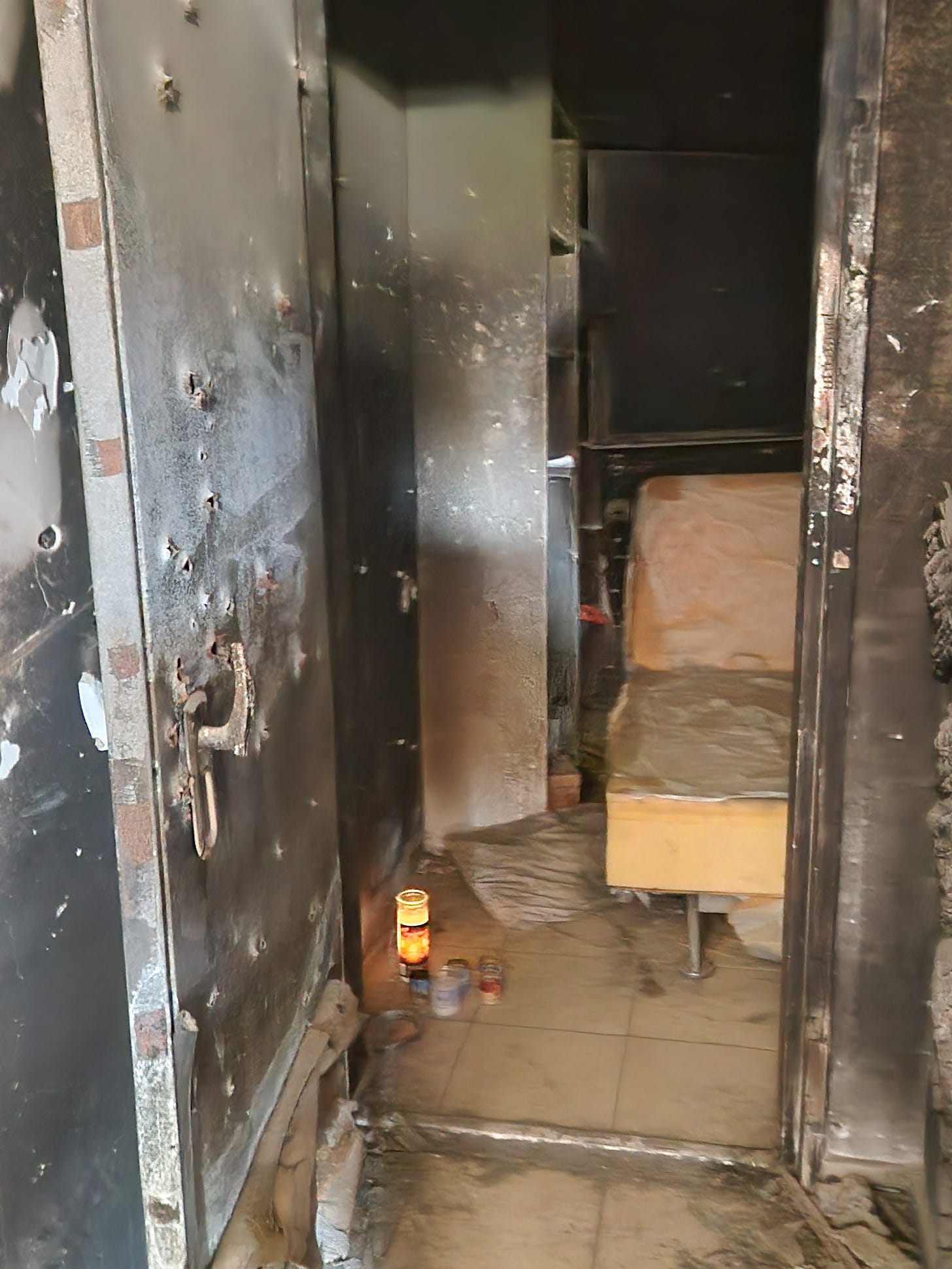
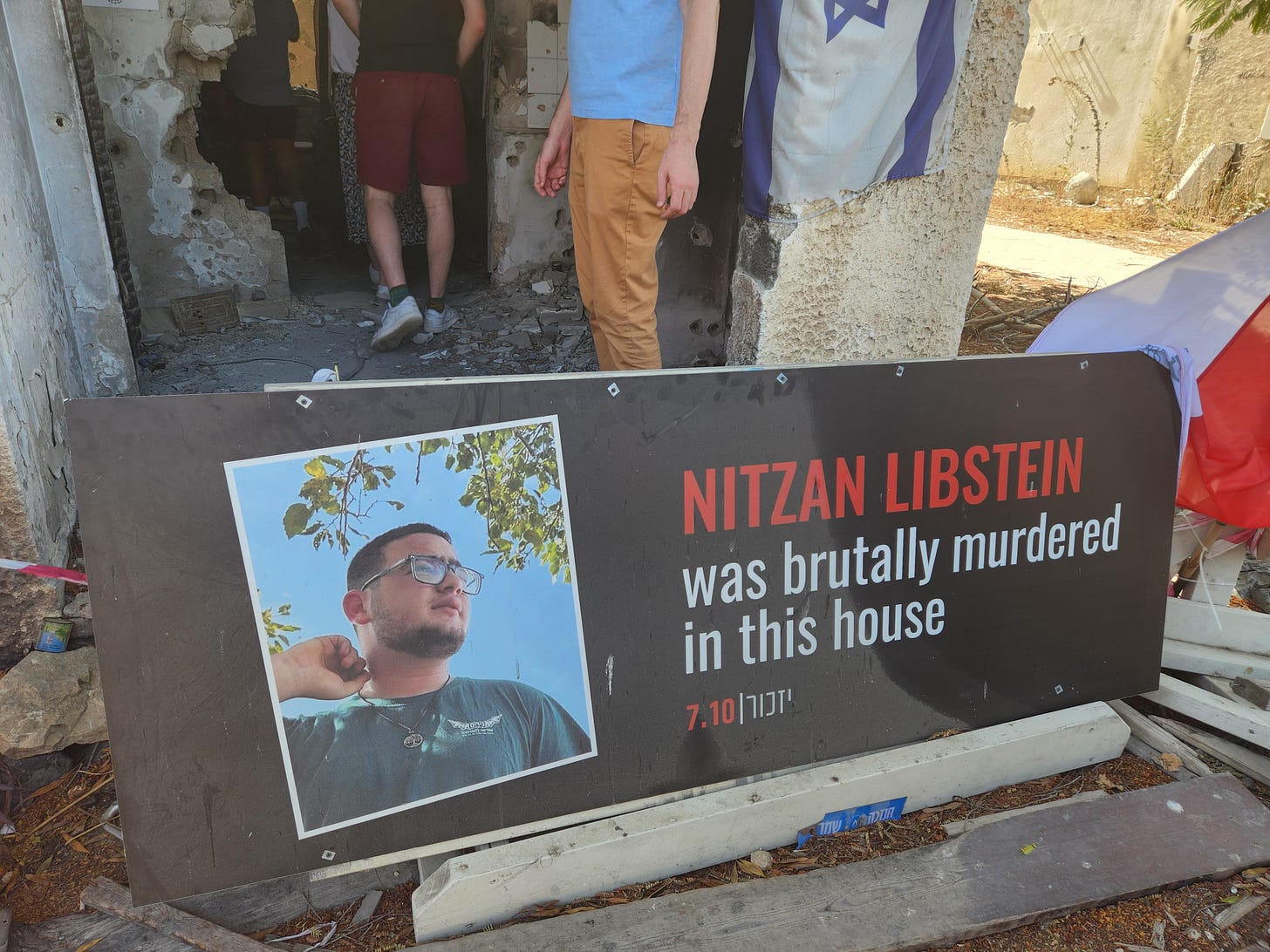
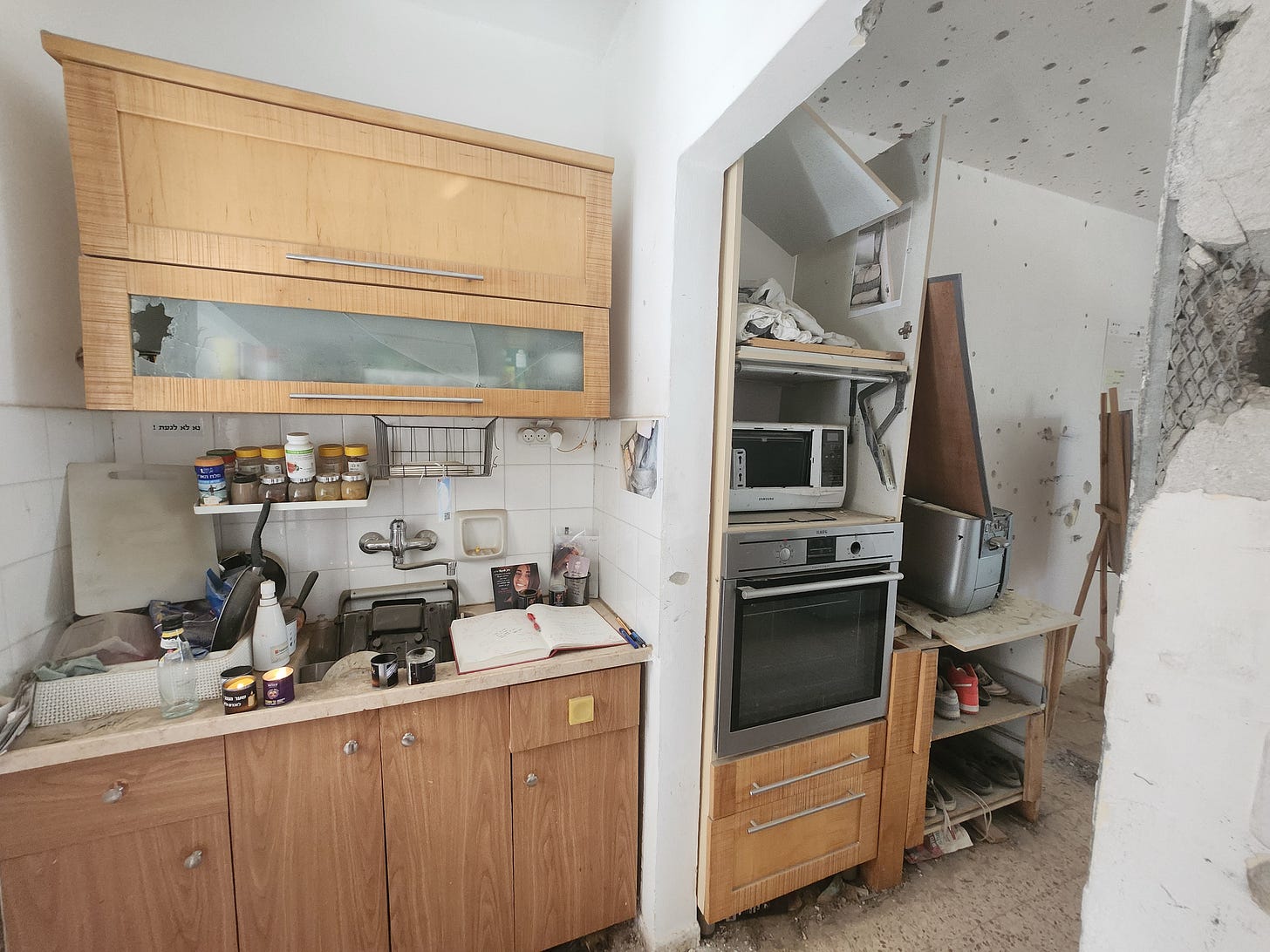
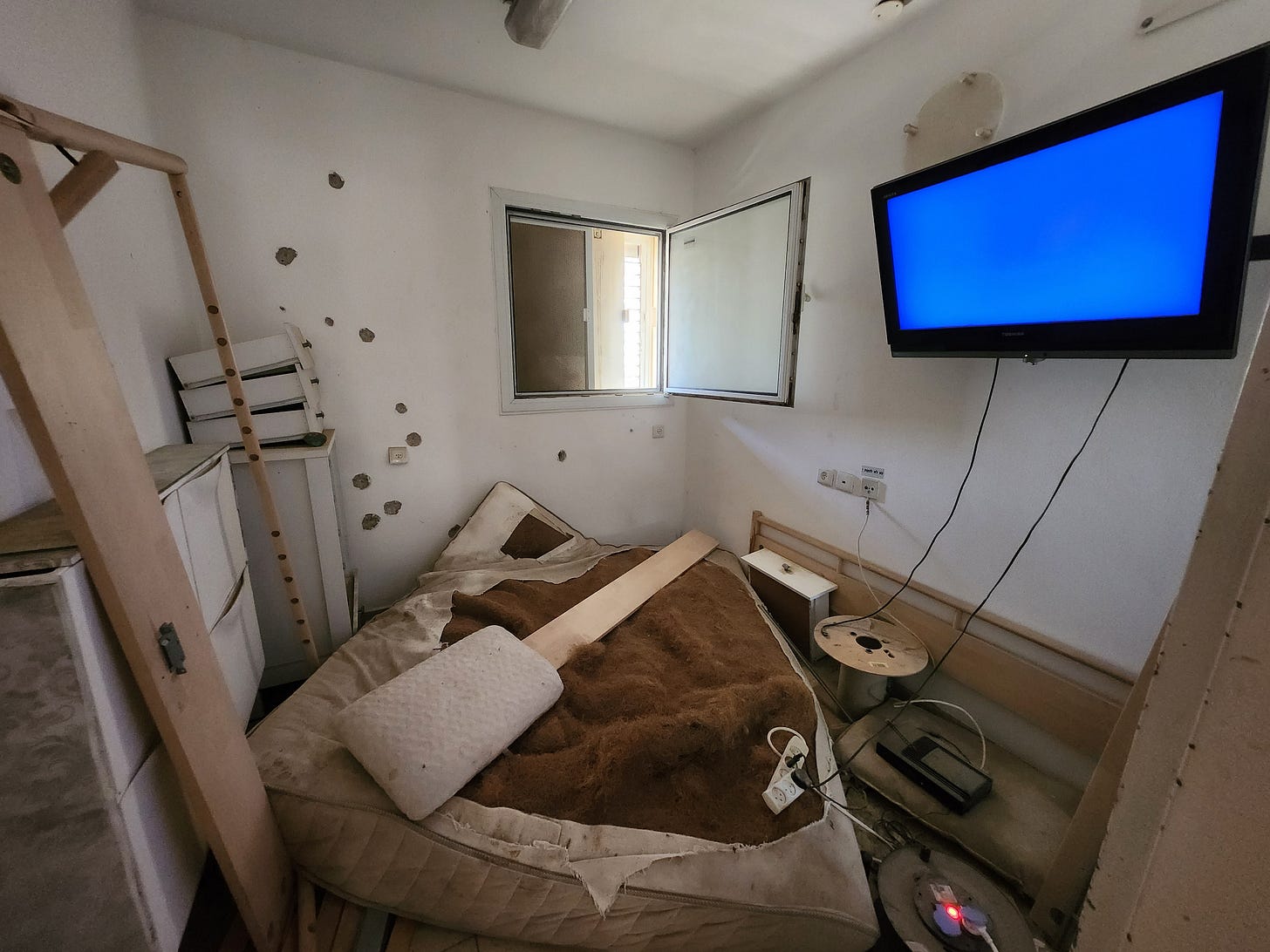
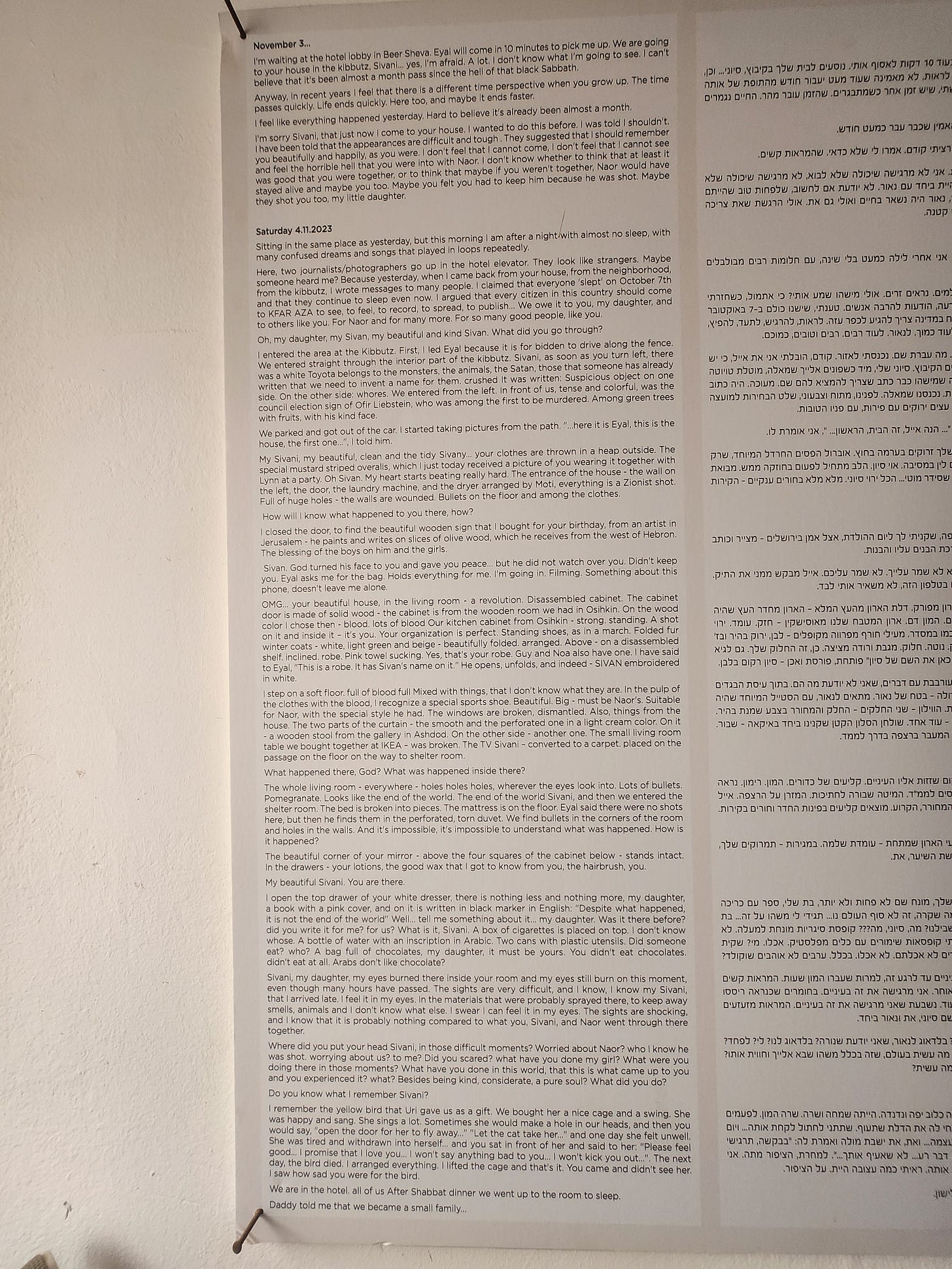
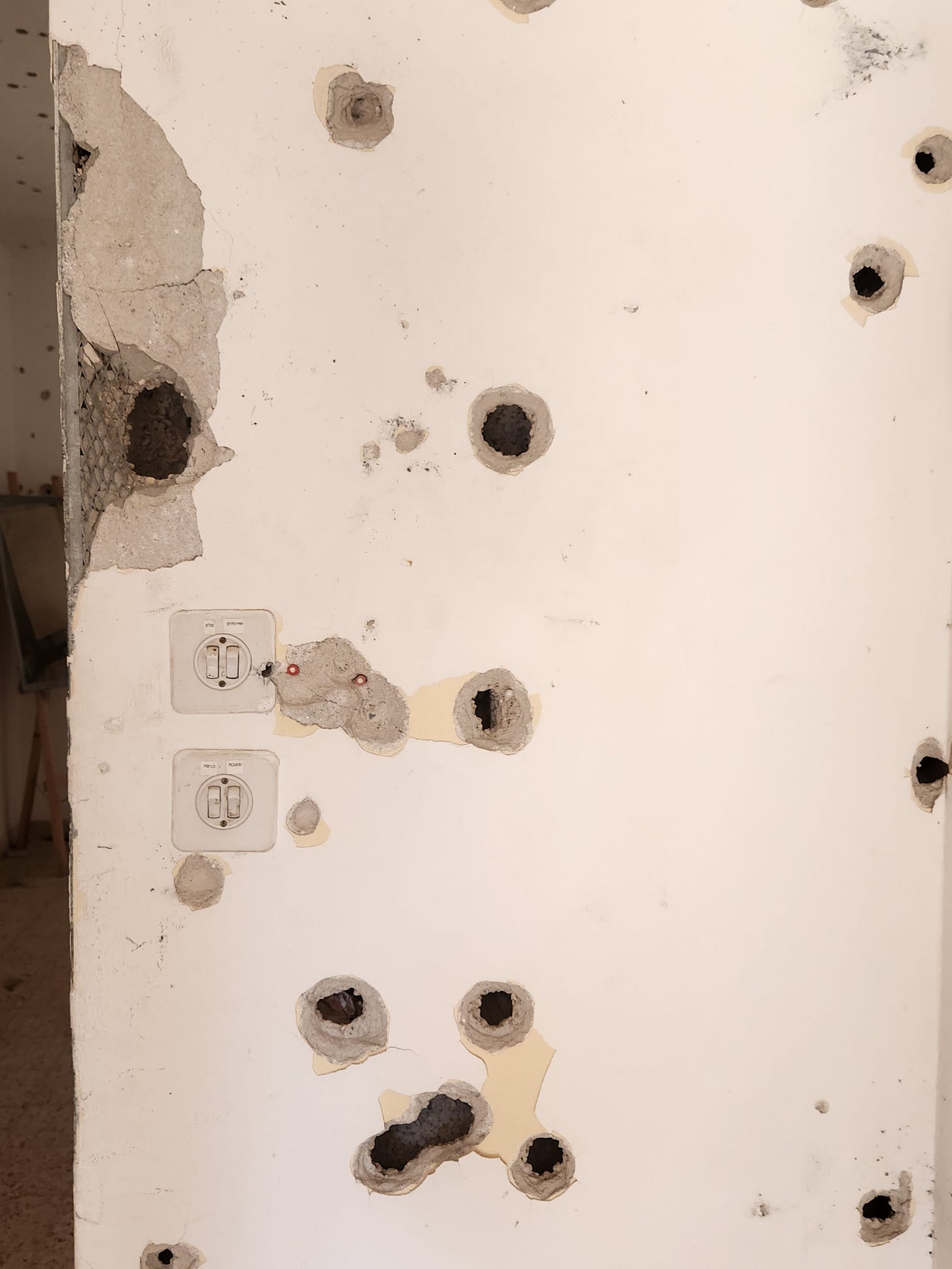
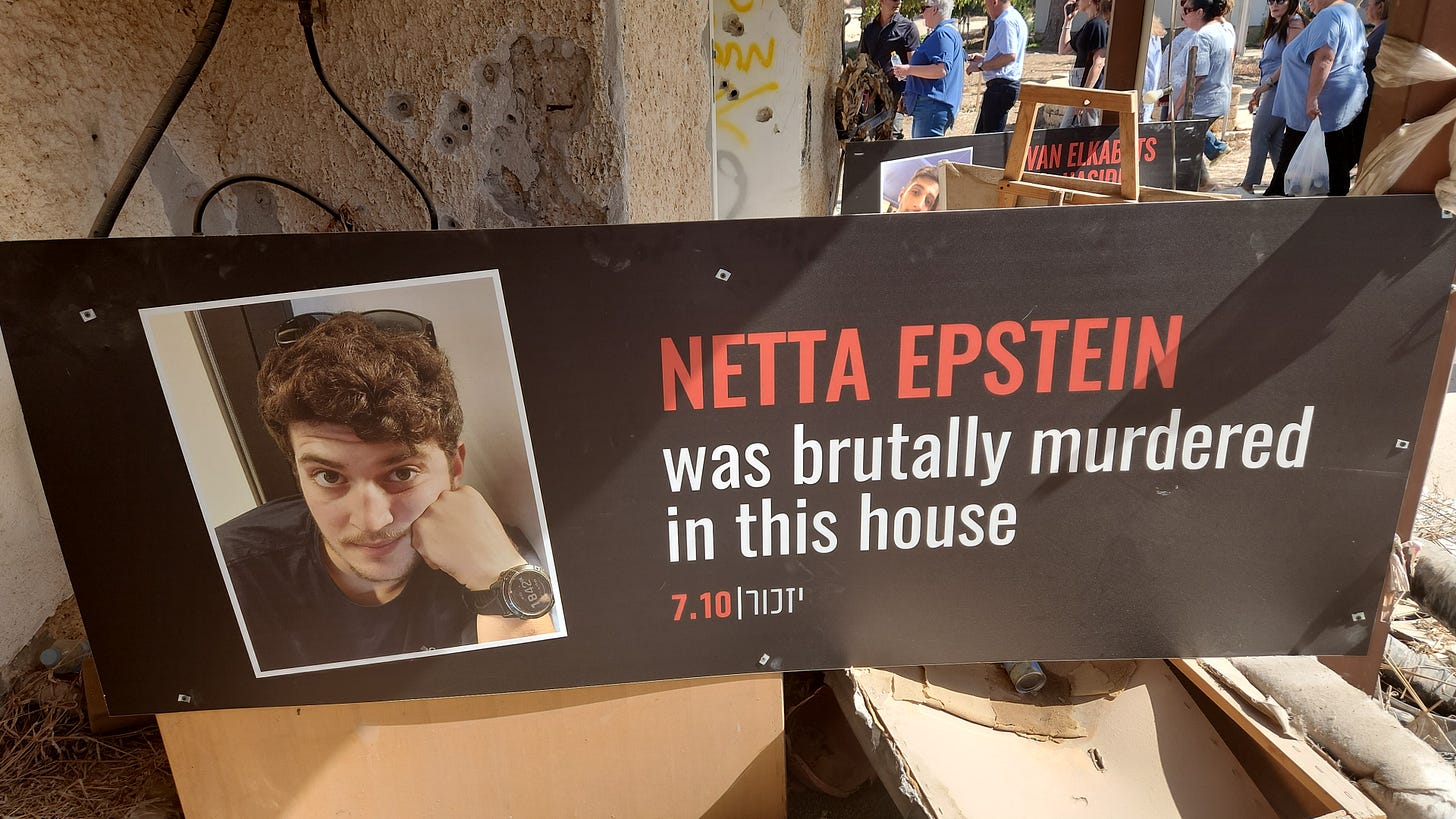
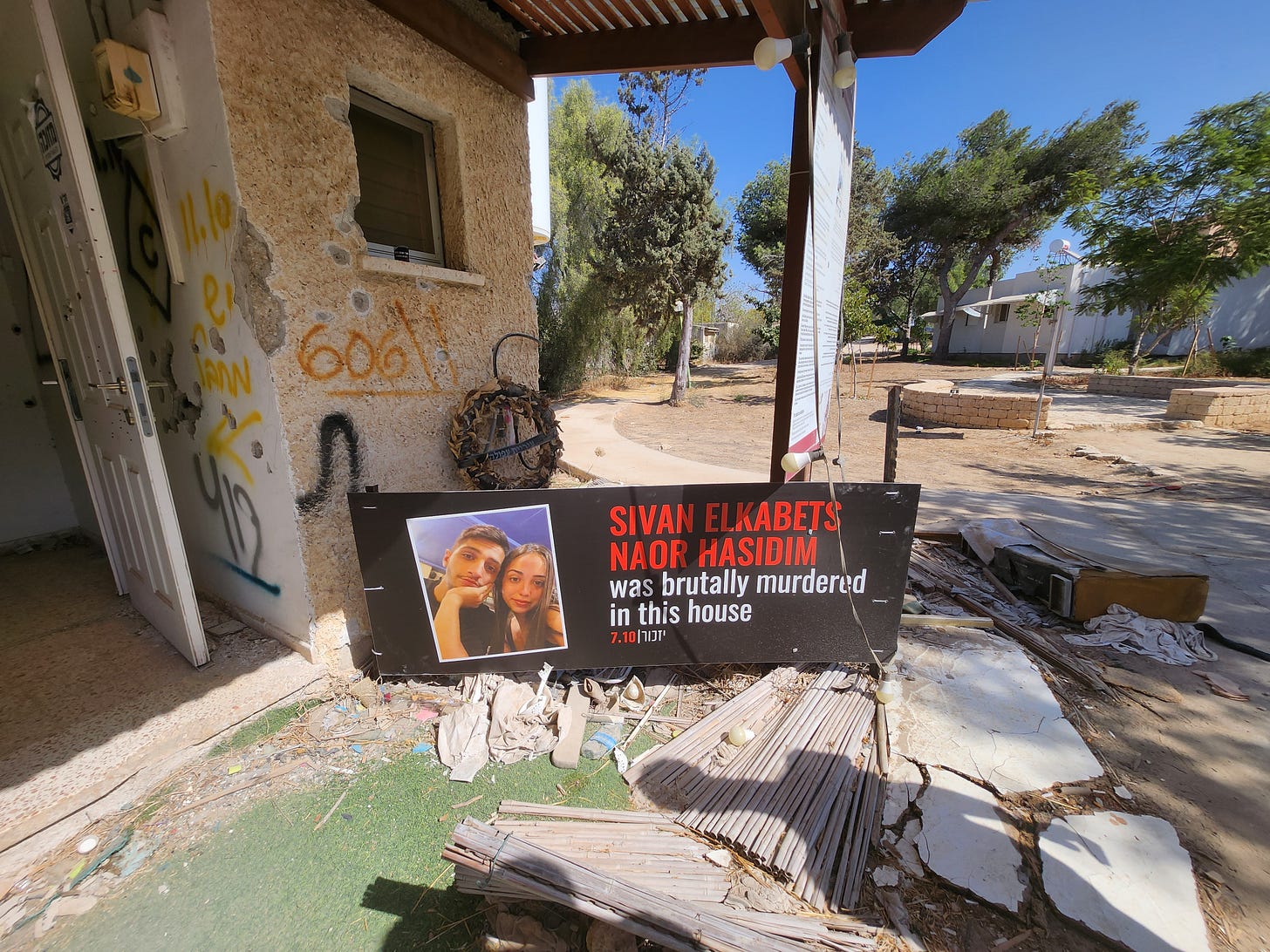
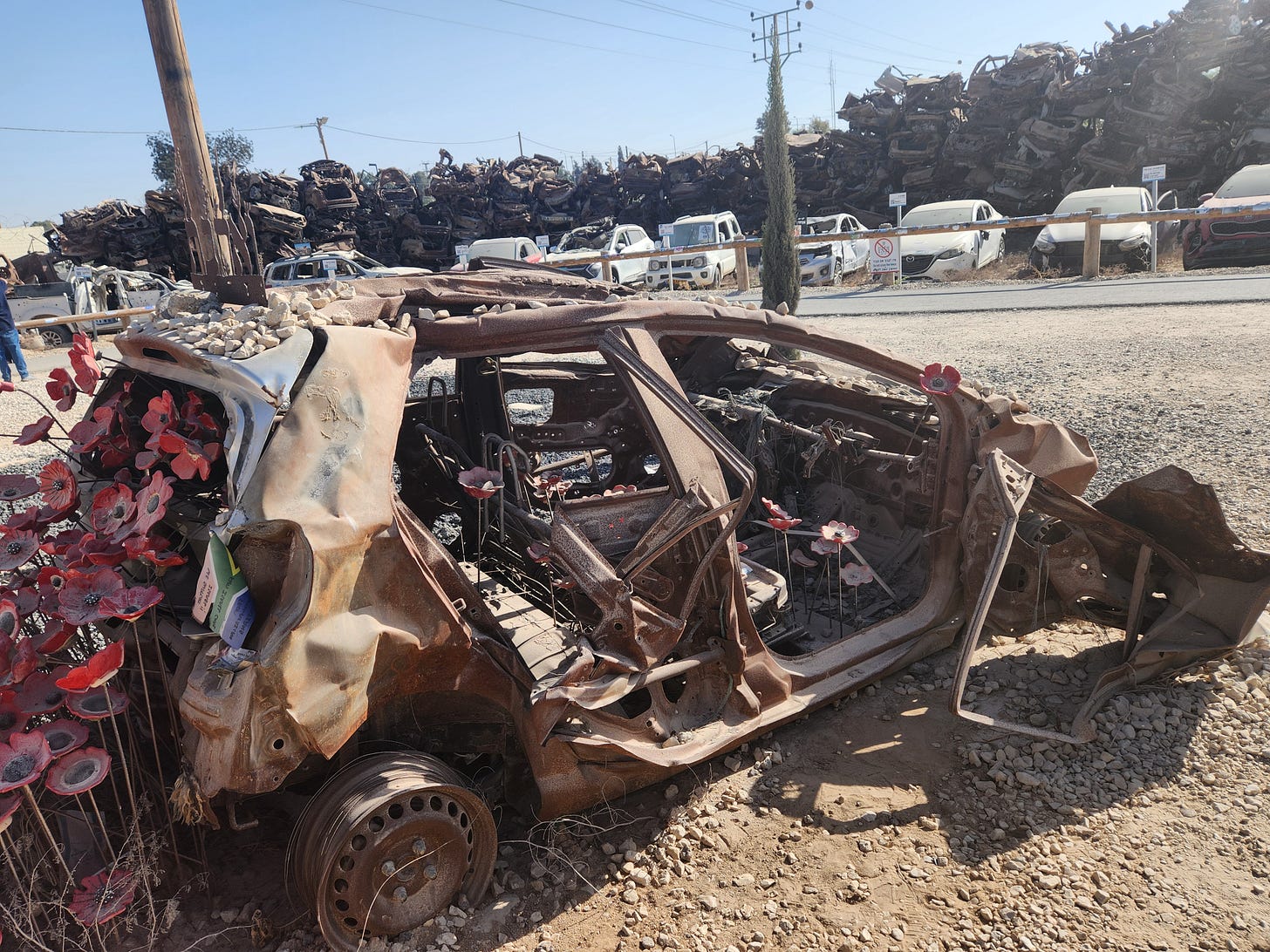
These barbarians are being brought in to Britain. As with many from war torn countries there is no atrocity they have not witnessed. They see it as normal life. Many are responsible for taking part in the slaughter of the innocents. They are immune to the suffering and carnage. To many it’s just another day in their lives. Where ever most of them go in the Western world, many will repeat these atrocities when the need arises. Every single one of us in mortal danger.
Yet our evil politicians and Elites think it’s supreme kindness to save them. They are drunk on their morally superior bankrupt high horses “They are just like us. We can bring them to the West we will show them love and understanding. They will love us in return for our humanity. They will be forever thankful for us giving them sanctuary…”WRONG WRONG WRONG!!!! Their pathological altruism will cause the death and destruction of us all. These people attack maim and kill without a second thought. We have been warned over and over. We have seen this behaviour right across the world. The one thing we learn from history is …WE NEVER LEARN FROM HISTORY!!!!!! Just destined to repeat these atrocities and horrors over and over. You can not reason with an ideology.
Horrific, Alex. It’s not possible to imagine the warped insanity of minds that did this or indeed of those that support such malevolence.